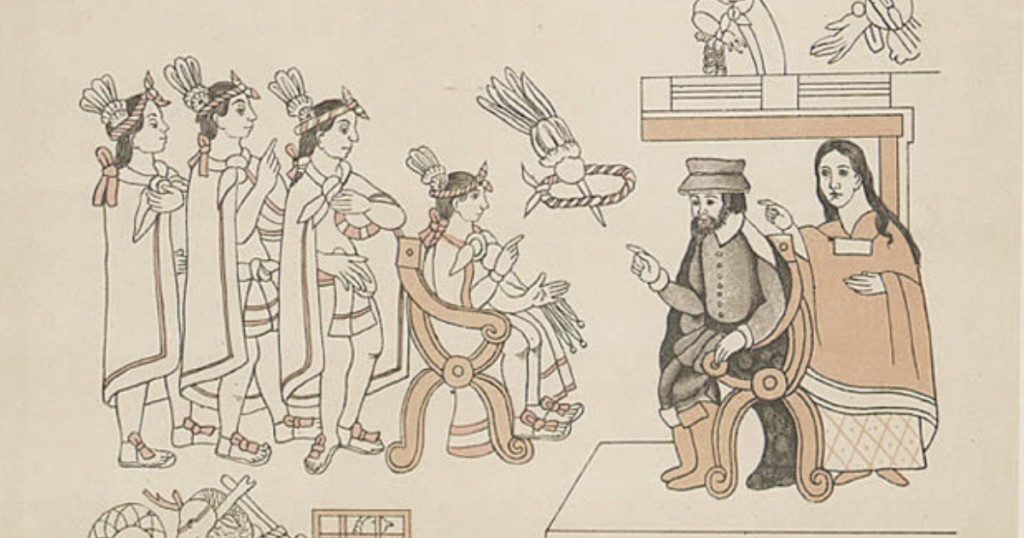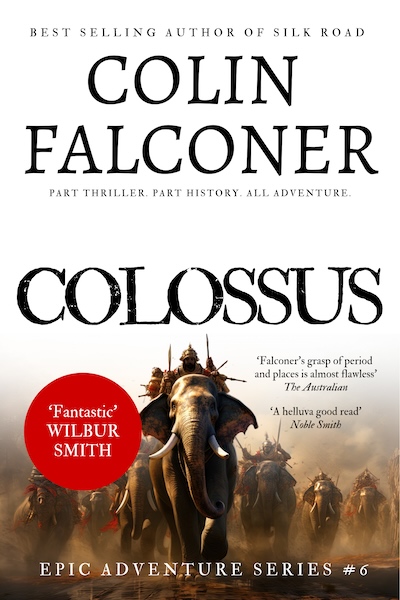And one woman
The scene was a publisher’s office in Mexico City. Three journalists were interviewing me at once. My novel about Cortes and the Mexican conquest had just been published and had attracted a lot of attention. More than the publisher had anticipated.
Two of the journalists liked my take on Mexican history. The third absolutely did not.
Why was he so upset?
It was the things I had written about a woman called La Malinche. Five hundred years after her death, she still provoked controversy across Mexico.
And her place in the country’s history is unparalleled.
Cortes and Malinali
When Spanish conquistador, Hernan Cortes, landed in the Yucatan in 1519, he subdued the local people with a brutal show of force. Awed by sixteenth century cannons and warhorses, they tried to appease him with gifts of gold and girls.
Cortes was happy to accept these tokens. He chose a young woman, Malinali, later known to history as La Malinche, as his personal concubine.
Malinali’s exact origins are unclear. Some believe she was a Mayan princess who was captured and sold as a slave.
Wherever she came from, she was an extraordinary young woman with an acute intelligence and a flair for languages. She could already speak several local dialects and was fluent in the nahuatl of the Mexican overlords, the Aztecs. She learned Spanish astonishingly quickly.
Help from local tribes
Through Malinali, Cortes discovered that there was infighting and disunity among the local tribes. The only thing they had in common was a vitriolic hatred of the Aztecs. He decided to use this information for his own ends.
It was the oldest trick in the book: divide and conquer.
Against the explicit orders of his superiors in Cuba, Cortes set off inland. He was bombarded with a mountain of treasure by the people along the way, and his tiny army grew with the addition of thousands of local warriors.
Within a few weeks, he was at the gates of the Aztec’s capital, Tenochtitlan, the site of modern day Mexico City.
He had the country and all its riches within his grasp.
Cortes could not have got this far purely by force of arms, despite his steel and gunpowder. He had set off from Cuba with just five hundred Spanish troops while the Aztecs numbered millions.
So, how did Cortes do it?
It seems that Malinali helped him to persuade the local chieftains that he was a returning god, the legendary Feathered Serpent. She may have even believed it herself. Her motives, what she said and how she said it remain a mystery. But in almost every contemporary drawing and painting of Cortes’ entrada, Malinali is at his side, whispering in his ear.
Cortes went along with the charade, pretending to be a deity returned to free the local people from the tyranny of the Aztecs.
It was only when Cortes and his men were lodged inside Tenochtitlan, that the Aztecs realised they had been duped and that perhaps Cortes was not a god after all.
He only narrowly escaped from the city with his life, but still had the temerity to return with enough men to lay siege.
His luck held out. He succeeded in the end, not because of military might, but because the Spanish had unwittingly brought with them another weapon. It was one that was common in Europe but to which the Aztecs had no antibodies.
Smallpox.
When an epidemic broke out among the besieged Aztecs, it decimated them. They surrendered.
La Malinche
No one knows exactly what became of Malinali after the conquest. Cortes showed his gratitude to her by marrying her off to someone else.
Her name has since been corrupted by history to La Malinche. Five hundred years later, she is reviled in the land of her birth. Today, the word malinchista is shouted across the floor of the Mexican parliament as a deadly insult.
It means a traitor to the Mexican people.
Malinali’s story and that of the conquistadores remains one of the most intriguing sagas in the history of the Americas.
FEATHERED SERPENT: I tell this story in my novel Feathered Serpent, which even after my controversial interview, stayed on the Mexican bestseller chart for four months.
🔗 Grab your copy here on Amazon in Kindle ebook, paperback or Kindle Unlimited.









